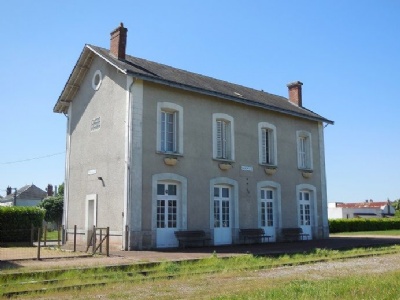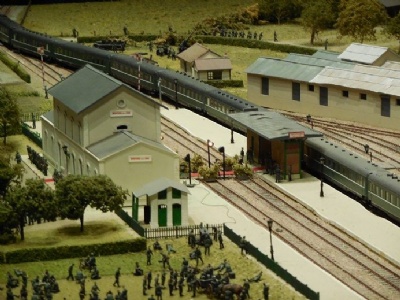Montoire-sur-le-Loir
It was at the Montoire-sur-le-Loir station that Hitler met with Philippe Pétain, the leader of the german friendly Vichy regime, on October 24, 1940. The meeting and the handshake between the two have in a way become a symbol of the Vichy regime’s cooperation with Nazi Germany, although any documents had never been signed. During the meeting, Hitler asked Pétain if he would be willing to declare war on Britain, but Pétain was not willing to do so. Hitler did not make much effort to persuade Petain and let the matter rest. For Hitler, the most important thing was that Pétain cooperated with the Germans. The meeting had been preceded by the Vichy’s Prime minister, Pierre Laval, meeting with Hitler at the same station two days earlier where he proposed a meeting between Hitler and Pétain.
Current status: Preserved with museum (2014).
Address: Avenue de la République, 41800 Montoire-sur-le-Loir.
Get there: Car.
Follow up in books: Kershaw, Ian: Hitler – A Biography (2008).



The station is today a small museum about the meeting between Hitler and Pétain and there is a very detailed model of the station with Hitler’s train.
Before France’s capitulation, Marshal Philippe Pétain was a French national hero, he was the one who had defeated the imperial German army at Verdun during the First World War. However, when France faced defeat in June 1940, he advocated capitulation and passive cooperation with the Germans, hoping to save some of France’s autonomy from German occupation. France surrendered on 22 June 1940, and on 10 July a nominal French state (a free zone) was proclaimed in the spa town of Vichy, and the new state was therefore also called the Vichy regime. This meant that with the approval of the French parliament, Pétain was given unlimited powers in the new state.
Pétain had the hope of appeasing the Germans and make them release French prisoners of war. Pétain was actually opposed to closer cooperation with the Germans, which his prime minister Pierre Laval advocated, therefore Pétain dismissed Laval in December 1940. However, the Germans forced Pétain to reinstate Laval in April 1942 and from then on Pétain’s role became more of nominal and Laval became de facto the real leader. But the Vichy regime was immediately an authoritarian state and camps were set up for both Jews and opponents of Pétain (and the Germans). The Vichy regime also instituted a couple of anti-Jewish laws (Statuts des juifs) in 1940 and 1941 that put French jews and other jews in France at risk of being imprisoned and deported eastward.
After the allied landing in North Africa in November 1942, the Germans occupied the free zone. Pétain remained in office (with Laval as prime minister) as the chief leader of the Vichy regime until 19 August 1944 when the Germans placed him under arrest. After the war, Pétain was put on trial and sentenced to death, a sentence that was later changed to life imprisonment. Pétain was held beyond all the limelight and sent to an isolated island off the French Atlantic coast where he died and buried in 1951 at the age of 95. Laval was also arrested but he was sentenced to death.